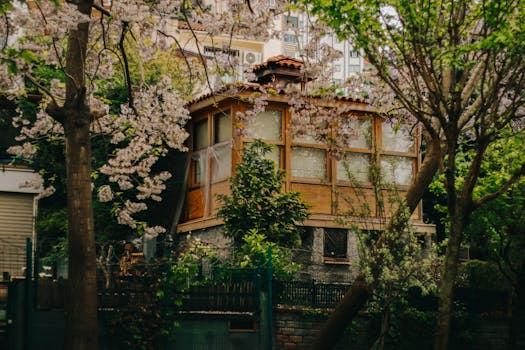
Urban Green Spaces: The Future of Outdoor Living in European Cities by 2025
Urban Green Spaces: The Future of Outdoor Living in European Cities by 2025 is becoming increasingly important as cities continue to grow and urbanize. As we look to the future, it’s clear that urban green spaces will play a vital role in shaping the quality of life for city dwellers. In this article, we’ll explore the benefits of urban green spaces, the current state of green infrastructure in European cities, and what the future holds for outdoor living in these urban environments.
Benefits of Urban Green Spaces
Urban green spaces offer a wide range of benefits for both residents and the environment. Some of the most significant advantages include:
- Improved air quality: Urban green spaces help to absorb pollutants and particulate matter, improving the air quality and making cities healthier places to live.
- Reduced urban heat island effect: Green spaces help to mitigate the urban heat island effect, which can increase temperatures in cities by up to 10°C.
- Increased biodiversity: Urban green spaces provide habitats for a wide range of plant and animal species, helping to maintain biodiversity in urban areas.
- Improved mental health: Spending time in nature has been shown to have a positive impact on mental health, reducing stress and anxiety.
- Increased physical activity: Urban green spaces provide opportunities for outdoor recreation, encouraging residents to engage in physical activity and improving overall health.
Current State of Green Infrastructure in European Cities
Many European cities are already investing heavily in green infrastructure, recognizing the importance of urban green spaces for the health and wellbeing of residents. Some notable examples include:
- Paris’s Green Belt: A 100km network of green spaces and parks that encircle the city, providing a natural oasis for residents and visitors.
- London’s Urban Forest: A initiative to increase tree cover in the city, with the goal of making London a greener, healthier, and more sustainable place to live.
- Copenhagen’s Green Roofs: A policy requiring all new buildings to incorporate green roofs, helping to reduce stormwater runoff and improve air quality.
Future of Outdoor Living in European Cities
As we look to the future, it’s clear that urban green spaces will continue to play a vital role in shaping the quality of life for city dwellers. Some trends that are likely to shape the future of outdoor living in European cities include:
- Increased focus on sustainability: Cities will prioritize sustainable design and materials in the development of green infrastructure, minimizing the environmental impact of urbanization.
- More emphasis on community engagement: Urban green spaces will be designed to foster community interaction and social connection, recognizing the importance of social cohesion in urban environments.
- Integration with technology: Urban green spaces will incorporate innovative technologies, such as smart lighting and green roofs, to improve efficiency and sustainability.
Conclusion
Urban Green Spaces: The Future of Outdoor Living in European Cities by 2025 is a critical component of creating sustainable, healthy, and livable cities. As we move forward, it’s essential that cities prioritize the development of green infrastructure, recognizing the numerous benefits it provides for residents and the environment. By investing in urban green spaces, we can create a better future for generations to come.



